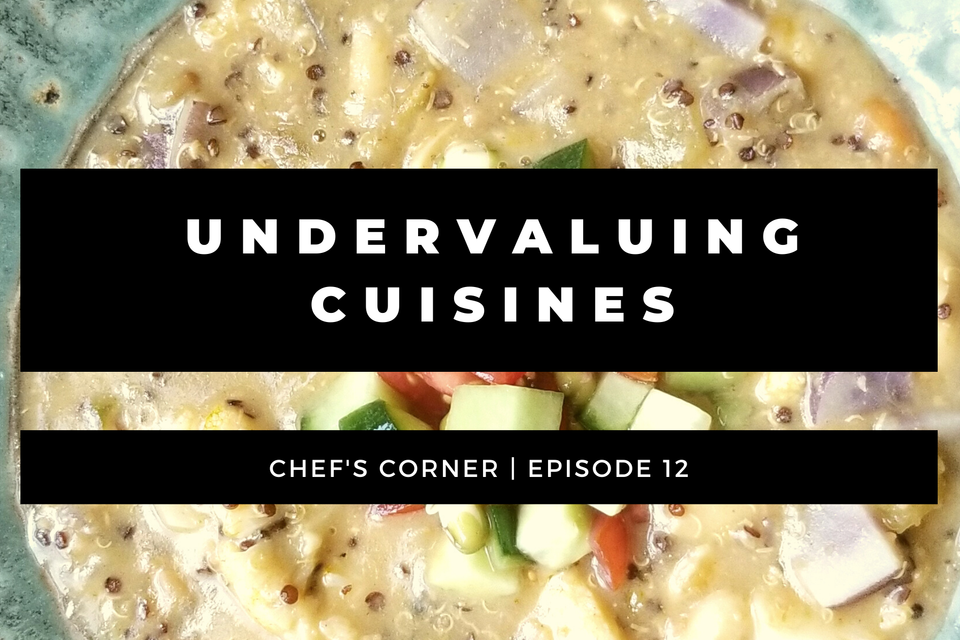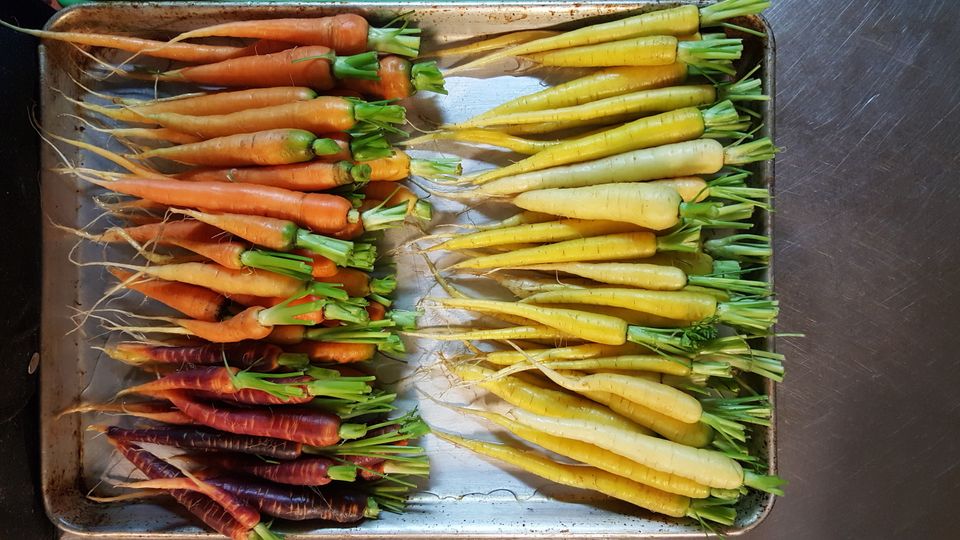By Hari Pulapaka, PhD, WCMC, CEC
January 20, 2021The almost 5 million individuals of Indian origin living in the United States have the highest per capita income of any single ethnic group and have earned more than three times the overall national percentage achievement of higher education (bachelor’s degree or higher). In a nutshell, U.S. inhabitants of Indian origin are among the richest and most “educated” immigrant group. As a professional chef and mathematician (of Indian origin) who believes and teaches the supply-demand model, I can’t help but lament the perception in the United States of cuisine attributable to the Indian subcontinent.
Only a week ago, we were dining at Jyran Tandoor Dining and Lounge at the swanky, business-forward, Sofitel, BKC Mumbai. The cuisine is purportedly inspired from the Northwest Frontier Province (NWFP) of India with a contemporary style. “Lost love” would be the restaurant name’s translation from Persian, and the highly skilled chef takes tremendous pride in his family’s 200-year-old lineage as chefs to Indian royalty. Evidently NWFP royals have not lost their love for butter and lots of it. Watch just about any travel video blog on Indian street food, and one would be hard-pressed to miss the excited approval of cooking with butter — I, on the other hand, have long lost any tendency to “monter au beurre” my food.
For most Westerners, Indian cuisine is summarized on a buffet of samosa with tangy brown and food coloring-assisted green sauces, butter naan, spiced and creamed tomato gravy, protein vindaloo, skewered or sizzling tandoori whatever, dal of the day, at-the-table papad with aforementioned samosa sauces, raita (not riata) at the end of the bar, and perhaps, the ubiquitous mango pickle and mango lassi. There’s no denying that the general perception of Indian food is largely influenced by the cuisines of Lucknow, Amritsar, Chennai, Goa, Hyderabad, Kolkata or Kochi. Specialties of Kolhapur, Patna, Udaipur, Bhubaneshwar or Shillong are much lesser known. That’s changing — slowly. Certainly, no one expects this level of diversity and complexity to be accessible even in a world-city like New York City (although New Yorkers will try to convince you otherwise).
The root cause of culinary stereotyping is our penchant for first impressions and inability to abstract.
Let’s consider some of the issues.
1. I do/don’t like curry.
Personally, I would much rather see a banishment of “curry powder” from grocery store shelves. That spice blend has single-handedly stereotyped the flavor of dishes purported to be from the Indian subcontinent. I once made a complex, spiced gravy for a guest from Guyana, who pointed out that he missed the “curry flavor.” I know exactly what he meant, but, for me, it was a win.
2. I don’t like spicy food.
There is spicy food, and there is pungent food. Spices in my book (literally) are plant-based and can be derived from any part of a plant, except the leaf (herb). To say that one doesn’t like spicy food would mean that one couldn’t enjoy apple pie with its hints of cinnamon, clove and whatever else. Now that’s just un-American. Not all Indian food uses spices, and certainly not all Indian food is pungent (as in “hot”). If you’ve ever had an “anapkai kura” (bottle gourd relish) with pesarattu (green gram crêpe) from Andhra Pradesh, a region known for its pungent and bold flavors, it will be apparent that for every stereotype, one can find a shattering counterexample.
3. That’s expensive.
Really? Consider a Hyderabadi biryani chock-full of grass-fed local mutton, dried fruits and nuts, expensive spices like saffron and cardamom, perhaps a few seasonal and local vegetables at their peak, and a reserve brand of imported basmati rice. A paella Valenciana can get away with a $32 price tag on a menu, but charging anything more than $19 for such a biryani would raise eyebrows. The ingredients are of the highest quality, the expertise required is at least as much as what is needed to expertly execute a paella, and the result, in my view, is at least as powerful. Comparing the price on the streets of Hyderabad to a version in a restaurant with all of its overhead costs is both invalid and unfair. Don’t even get me started on risotto. Fifteen dollars for a taco?! Well, you asked for fresh lobster and got expertise from the kitchen, so why not? Yet a mere $14 for canned Indonesian snails warmed in (albeit, clarified, hopefully) butter and mushrooms with commodity bread feels like a steal. No, it isn’t.
In a nutshell, the more we expect ethnic food to be inexpensive, the more frequently it is executed in a formulaic and tempered way using substandard ingredients. This is a case of driving down the quality of supply to meet an obvious demand. There is certainly a time and place for a less-than-refined or -inspired execution, but just because it isn’t French, Japanese, or just about any Western European cuisine, it doesn’t mean that the food is lesser in stature when it comes to technique, intrinsic quality, or perceived value.
Pedaling back to my challenge to the Indian diaspora in this country — we bear a certain responsibility to spread the deserving demand. After all, the facts point toward a group who can certainly afford it and are educated enough to understand that the stereotypes will remain as long as we perpetuate them ourselves. Yet, it’s not uncommon to see large groups of people of Indian origin at Indian restaurants being generally condescending, unreasonably demanding, behaving badly to servers and cooks, tipping poorly (tipping is a loaded topic), and expecting discounts. Most of the rest of them apparently prefer only home-cooked meals for a myriad of reasons, often religious. I admire the latter group a lot more than the former.




